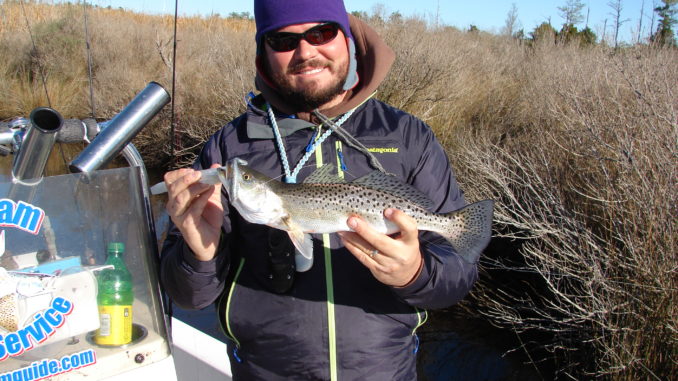
The northwestern portion of Pamlico Sound is prime red drum and trout habitat year-round, with flounder available during the warm months. From where the Intracoastal Waterway crosses the sound to the Pungo River and wrapping around the edge of the sound to Long Shoal Point east of Engelhard, numerous bays, creeks and rivers have ideal habitat for these and other fish.
A mixture of shallow and deep areas, plus saltwater creeks and bays that are adjacent to creeks and bays with fresh water feeding into their upper reaches create a diversity that breeds baitfish, shrimp and crabs and keeps food available for larger fish. Without lunar tides, water levels and temperatures are pretty consistent unless a strong wind pushes water around or if there is a significant prolonged temperature shift.
Rose Bay is one of the better-known areas, with reds and trout available very close to the public ramp beside US 264. Rose Bay Creek has a reputation for speckled trout and is often heavily fished. Other nearby creeks can handle more boats.
Bell Island in Rose Bay has a 1,000-foot public fishing pier that is part of the Swan Quarter National Wildlife Refuge. Pier fishermen regularly catch red drum, black drum and speckled trout during the winter, plus flounder, croakers and more in warmer weather. The pier is accessed by a 2-mile gravel road that intersects with U.S. 264 a few miles east of the Rose Bay Ramp and west of Swan Quarter.
The diversity of habitat allows fish to mirror the movement of baitfish and shrimp or according to the water temperature. Baitfish and shrimp are scarce during the winter but return in the spring, and food is abundant. Most of the time the water temperature is within the comfort range of redfish and speckled trout.
Early in the winter or during a moderate winter, fish may be spread all the way out to the small bays and pockets at the edge of sound. During the coldest weather, fish often retreat to deeper holes back in the creeks away from the sound and open bays. Fishermen who take time to learn the area and the habits of the fish can usually enjoy fun days of fishing, especially in the late winter as the water begins to warm and the fish are excited and feeding.


Be the first to comment